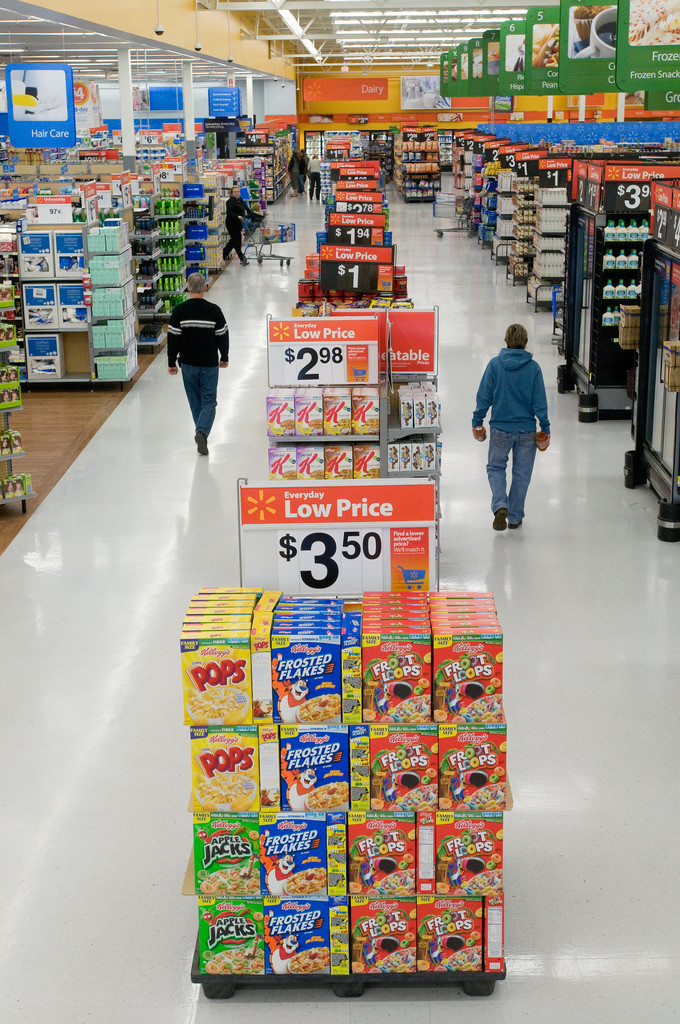Consumer Product Categories
LEARNING OBJECTIVES
- Define a product
Consumer products are often classified into four groups related to different kinds of buying decisions: convenience, shopping, specialty, and unsought products. These are described below.
Convenience Products
A convenience product is an inexpensive product that requires a minimum amount of effort on the part of the consumer in order to select and purchase it. Examples of convenience products are bread, soft drinks, pain reliever, and coffee. They also include headphones, power cords, and other items that are easily misplaced.
From the consumer’s perspective, little time, planning, or effort go into buying convenience products. Often product purchases are made on impulse, so availability is important. Consumers have come to expect a wide variety of products to be conveniently located at their local supermarkets. They also expect easy online purchase options and low-cost, quick shipping for those purchases. Convenience items are also found in vending machines and kiosks.
For convenience products, the primary marketing strategy is extensive distribution. The product must be available in every conceivable outlet and must be easily accessible in these outlets. These products are usually of low unit value, and they are highly standardized. Marketers must establish a high level of brand awareness and recognition. This is accomplished through extensive mass advertising, sales promotion devices such as coupons and point-of-purchase displays, and effective packaging. Yet, the key is to convince resellers (wholesalers and retailers) to carry the product. If the product is not available when, where, and in a form the consumer desires, the convenience product will fail.
Shopping Products
In contrast, consumers want to be able to compare products categorized as shopping products. Shopping products are usually more expensive and are purchased occasionally. The consumer is more likely to compare a number of options to assess quality, cost, and features.
Although many shopping goods are nationally advertised, in the marketing strategy it is often the ability of the retailer to differentiate itself that generates the sale. If you decide to buy a TV at BestBuy, then you are more likely to evaluate the range of options and prices that BestBuy has to offer. It becomes important for BestBuy to provide a knowledgeable and effective sales person and have the right pricing discounts to offer you a competitive deal. BestBuy might also offer you an extended warranty package or in-store service options. While shopping in BestBuy, consumers can easily check prices and options for online retailers, which places even greater pressure on BestBuy to provide the best total value to the shopper. If the retailer can’t make the sale, product turnover is slower, and the retailer will have a great deal of their capital tied up in inventory.
There is a distinction between heterogeneous and homogeneous shopping products. Heterogeneous shopping products are unique. Think about shopping for clothing or furniture. There are many stylistic differences, and the shopper is trying to find the best stylistic match at the right price. The purchase decision with heterogeneous shopping products is more likely to be based on finding the right fit than on price alone.
In contrast, homogeneous shopping products are very similar. Take, for example, refrigerators. Each model has certain features that are available at different price points, but the basic functions of all of the models are very similar. A typical shopper will look for the lowest price available for the features that they desire.
Speciality Products
Specialty goods represent the third product classification. From the consumer’s perspective, these products are so unique that it’s worth it to go to great lengths to find and purchase them. Almost without exception, price is not the principle factor affecting the sales of specialty goods. Although these products may be custom-made or one-of-a-kind, it is also possible that the marketer has been very successful in differentiating the product in the mind of the consumer.
For example, some consumers feel a strong attachment to their hair stylist or barber. They are more likely to wait for an appointment than schedule time with a different stylist.
Another example is the annual Blizzcon event produced by Blizzard Entertainment. The $200 tickets sell out minutes after they are released, and they are resold at a premium. At the event, attendees get the chance to learn about new video games and play games that have not yet been released. They can also purchase limited-edition promotional items. From a marketer’s perspective, in Blizzcon the company has succeeded in creating a specialty product that has incredibly high demand. Moreover, Blizzard’s customers are paying for the opportunity to be part of a massive marketing event.
It is generally desirable for a marketer to lift her product from the shopping to the specialty class—and keep it there. With the exception of price-cutting, the entire range of marketing activities is needed to accomplish this.
Unsought Products
Unsought products are those the consumer never plans or hopes to buy. These are either products that the customer is unaware of or products the consumer hopes not to need. For example, most consumers hope never to purchase pest control services and try to avoid purchasing funeral plots. Unsought products have a tendency to draw aggressive sales techniques, as it is difficult to get the attention of a buyer who is not seeking the product.

